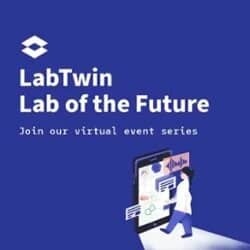After completing a PhD at the Max Planck Institute of Molecular Plant Physiology, Liliana now works in metabolic and protein engineering. She studies potential enzymes for sustainable projects. We sat down with Liliana to learn how LabTwin helps with her work.
Which digital tools do you currently use in your work?
I use a broad range of software for bioinformatics: Geneious, Benchling, LabCollector, MatLab, everyVECTOR, PyMOL.
How do you currently manage your data?
We investigate bacterial growth rates with plate readers and analyze them using MatLab. Furthermore, I use MS Excel and the institution’s official LIMS to store information related to bacterial strains and plasmids.
What do you think research labs will look like in 5 years time?
The technology running in labs will be faster and will lead to better information management.
Why did you decide to join LabTwin’s ambassador program, Twenty Nine?
The use of traditional lab notebooks is not efficient nowadays, therefore I am interested in finding out what is new in regard to technologies being used in laboratories. My goal is to keep my data storage well organized, including protocols, results, samples, etc., and explore tools for sharing information in real time with colleagues. Moreover, sharing my scientific experience with LabTwin‘s product team gives me the feeling that my wishes and constraints are being taken into account during development of the platform. LabTwin is a very promising digital tool for daily work in the lab.
What do you like most about LabTwin's voice-activated digital lab assistant?
It’s useful when your hands are busy and you need to write down information about your running experiments. The use of a wake-word to activate transcription of voice notes comes in handy and helps avoid confusion.
What workflows and use cases would you like LabTwin to support (e.g. protein extraction, cell culture, qPCR, microscopy?
LabTwin should support all basic molecular biology methodologies because these are employed in many research labs. The option to have modifiable templates of basic protocols for these methodologies would be very useful.
What benefits could LabTwin’s digital lab assistant provide researchers in your team or your organization?
For younger students, the use of a digital lab assistant, with templates and options for data storage will be extremely useful to get them engaged in daily lab work from the beginning. For experienced scientists, LabTwin’s digital lab assistant will help them streamline their work to achieve their goals faster.
What are your thoughts on LabTwin's impact on research reproducibility and quality control?
When using LabTwin, data and protocol management can be shared with everyone in the lab. This includes troubleshooting, technique improvement, and tracing results to achieve higher reproducibility rates and better quality control.
What are your thoughts on LabTwin's impact on Good Laboratory Practices and Good Manufacturing Practices?
By sharing real-time data and changes to SOPs between colleagues, there will be a greater adoption of regulations.
In your opinion, how will an AI and voice-powered product like LabTwin shape the Lab of the Future?
A digital lab assistant will support the lab work of many researchers by showcasing improvements to experimental strategies. This will help enormously when it comes to designing and troubleshooting scientific studies.











